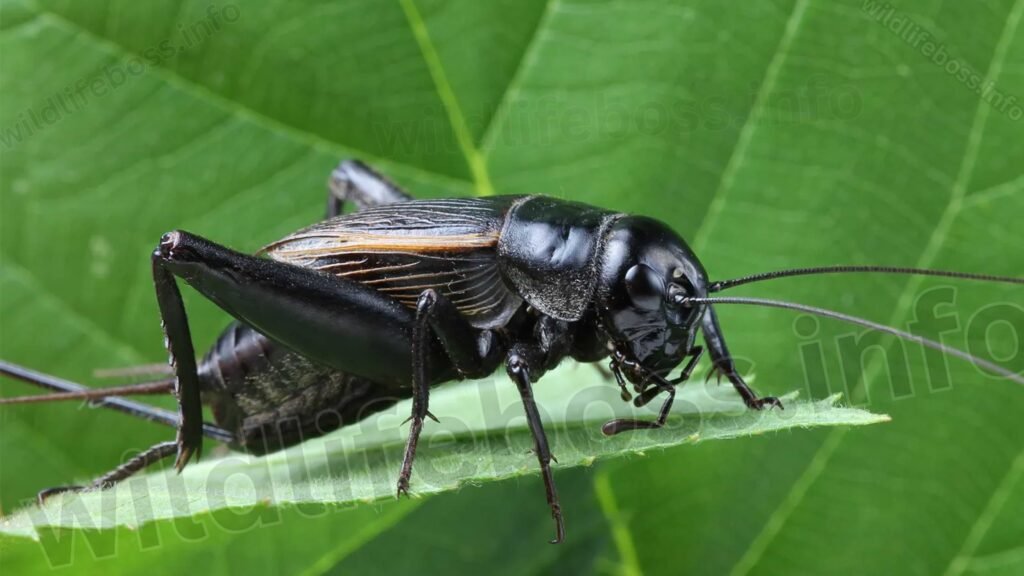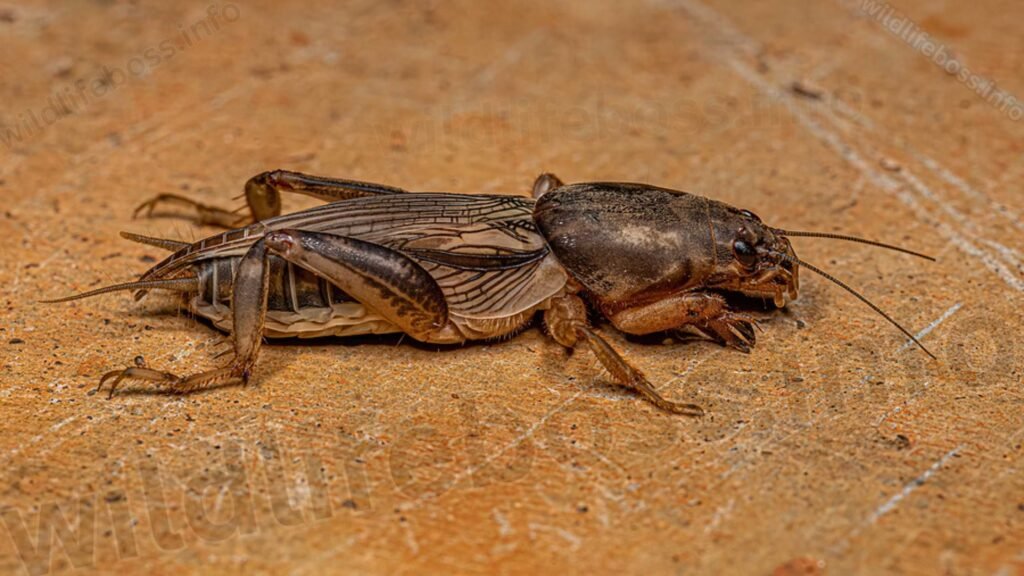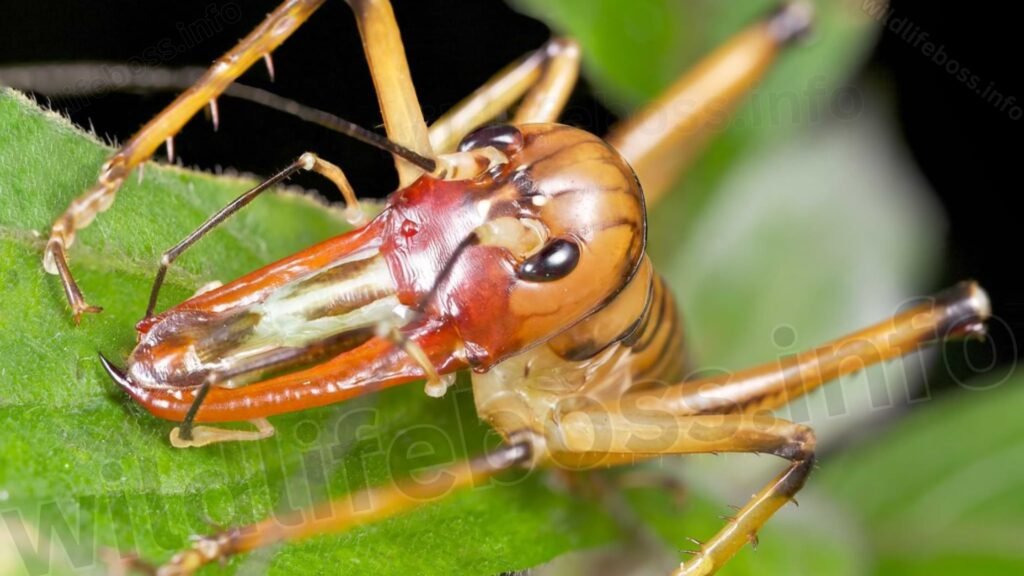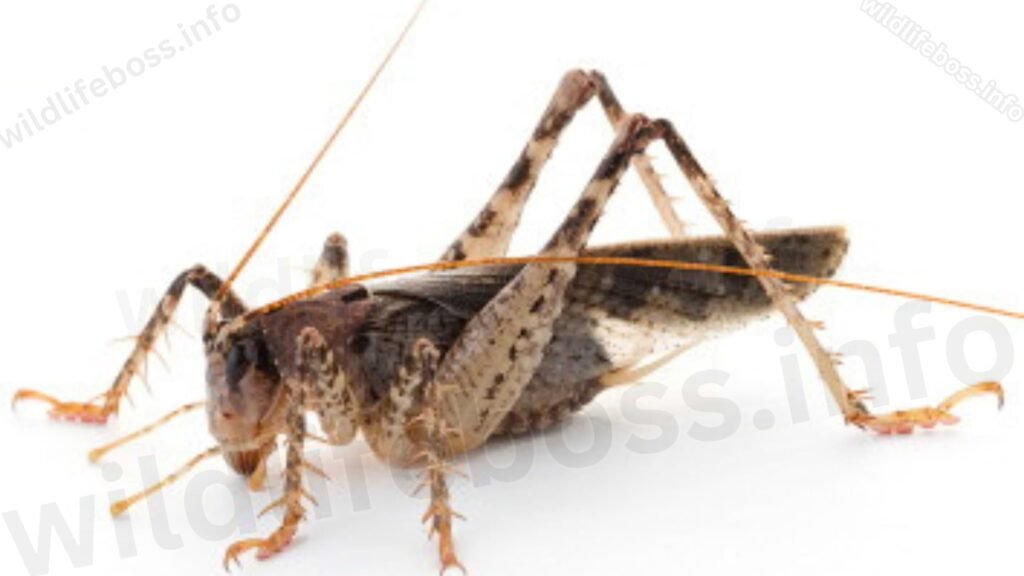These insects are found all throughout the world, and their main characteristics are their ability to jump and chirp.
But when we list all the many types of crickets, we’ll discover that there’s a lot more to them.
-
- True Crickets
- Scaly Crickets
- Spider Crickets
- Sword-tail & Wood Crickets
- Mole Crickets
- Ant Crickets
- Bush Crickets (Katydids)
- Mormon Crickets
- King Crickets
- Sand Crickets
- Cave Crickets
- Dune Crickets
- Pteroplistinae Crickets
- Grigs
1. True Crickets

Scientific name (family): Gryllidae
There’s some misunderstanding about what “true crickets” are. Although they are officially members of the Tettigoniidea infraorder, insects in the Trigonidiinae subfamily are also referred to by the American word for “bush crickets.”
The Gryllidae family of true crickets is distinguished by their extremely long, whip-shaped antennae. With the exception of Antarctica, these small insects are found all over the planet, and some of them can reach a length of two inches.
Even though they are little, they can dig enormous holes that are roughly three feet deep. When the weather permits, they are the earliest crickets to sing, typically in the early spring.
2. Scaly Crickets
Scientific name (family): Mogoplistidae
While their are only 364 species of these crickets globally, they thrive in tropical and sub tropical climates and are most common in areas close to water sources. That is why they are most often located in the south area of America.
The characters on the body are similar to the moth and butterfly, and the abdomen is also covered with scales, which are different from those of the other crickets. More especially in Texas, these insects have either reduced wings, or in some cases, no wings at all.
3. Spider Crickets
Scientific name (family): Phalangopsinae
Due to the constraint of their geographical availability as subtropical and tropical creatures, these crickets are only native to South America, Africa, and Australia.
These spider crickets are from the cave spider group so should not be mistaken for another group of crickets with the same name.
In South America, this particular species of cricket is primarily nocturnal and inhabits rocky and forested environments, frequently congregating in huge numbers (albeit this is true only for some species).
4. Sword-tail & Wood Crickets
Scientific name (family): Trigonidiidae
Wood crickets and sword-tail crickets are the two subfamilies that make up this family. Compared to other cricket species, wood crickets are tiny and rarely grow longer than 0.6 inches.
They are typically found in woodlands all throughout the world and, in contrast to many other crickets, are not nocturnal.
In contrast, sword-tail crickets are typically found in tropical regions and are distinguished by their extremely lengthy rear legs. We know very little about this kind of cricket.
Sea Also: 16 Best Insect Species That Are Similar to Butterflies(With Photos)
5. Mole Crickets

Scientific name (family): Gryllotalpidae
Just like other crickets, mole crickets can dig into the ground through their well developed fore limbs.
That, as well as the fact that they are digging a lot and dwell underground most of the time, their eyes are underdeveloped as true moles’ ones. Despite the fact that it burrows it is quite an excellent flyer.
Their main purpose is to lay their eggs and rear their young, although they also dig to locate worms and avoid predators.
As omnivores, they primarily consume small insects, worms, and some plants. The majority of North and South America, as well as East Australia, South Asia, North Africa, and Europe, are home to mole crickets. In Florida, certain types of crickets are considered pests.
6. Ant Crickets
Scientific name (family): Myrmecophilidae
Ant crickets, one of the few types of crickets that don’t sing, are always found near the ant hills virtually in all the corners of the globe.
Nevertheless, they are seen very often since they live most of their lives in burrows. It would be surprising, for example, that while these crickets do not have wings and cannot make a sound.
They are commonly referred to as “ant-loving crickets” because they mostly consume the scraps that worker ants carry into the mound. The rough shell on their backs makes them resemble cockroaches.
7. Bush Crickets (Katydids)
Scientific name (family): Tettigoniidae
These insects were called long-horned grasshoppers, but now it has been discerned that they are crickets rather than grasshoppers.
Actually, there are more than 8000 kinds of them in the globe and more than 2000 species of them could be found in tropical areas such as the rainforests of the Amazon.
They can grow up to 5.1 inches, while the smallest of its kind measures at 0.2 inches.
Bush crickets have a lot of vocalization, especially at night. These international crickets consume plants and other creatures; some can even kill small lizards and snakes.
8. Mormon Crickets
Scientific name (genus): Anabrus
The Mormon cricket, Anabrus simplex, is the genus’s emblematic species, albeit there are only a few more.
They are located in western North America and can reach a maximum size of 3 inches. Since Mormon settlers in Utah were the first to come into contact with them, they are named after them.
Because they frequently swarm a certain region, particularly during their swarming period, these types of crickets species are regarded as a dangerous pest in Utah. Because they cause a slippery road surface and distract drivers, they are even hazardous to traffic.
Their numbers are managed by rodents, birds, coyotes, and even a particular kind of horsehair worm.
9. King Crickets

Scientific name (family): Anostostomatidae
South America, Australia, and Africa are home to these enormous types of crickets. Both extremely hot and extremely cold temperatures can be tolerated by them. They are found in a variety of settings due to their flexibility.
With the exception of a few Australian species, king crickets are primarily nocturnal and incapable of flying. As foragers, they primarily consume leaves, fungus, and animal carcasses.
Remarkably, a funnel-web spider can be killed and consumed by a king cricket.
10. Sand Crickets
Scientific name (tribe): Stenopelmatini
Large insects, sand crickets can be found in parts of the western United States and Central America.
This tribe is sometimes referred to as potato bugs and Jerusalem crickets. They may search for plant stuff to feed on by digging beneath the ground thanks to the development of powerful legs and feet.
They sing loudly, and during mating, each species has a particular melody they sing. They are frequently confused for spiders due to their size and three pairs of legs.
These California insects are not carnivorous, but they do have really strong jaws that can bite with great force. A bad odor frequently follows the bite.
Sea Also: Hornet Vs Wasp Nest(7 amazing Differences)
11. Cave Crickets
Scientific name (family): Rhaphidophoridae
These crickets which are endemic to most world regions are adapted to live in burrows, caverns and other underground places. It can be characterized by long antennae and very long legs – much longer than the body.
The antennae are essential for navigation; these types of crickets rely on their antennae to guide them by touch because they spend the majority of their time in the dark.Although they are unable to fly, they may leap to elude predators.
Although cave crickets pose little threat to humans, they have been known to infiltrate homes, particularly those with basements.
12. Dune Crickets
Scientific name (family): Schizodactylidae
These predatory types of crickets, which are only found in Africa and Asia, typically reside in burrows and sand dune systems where they feast on other insects.Their antennae are longer than their bodies, and they are usually yellow in color.
In addition to being carnivorous, these Asian cricket species frequently engage in cannibalism, murdering and consuming juvenile nymphs.
They will consume fish and meat if it is available, but because their mandibles are designed to hunt insects, they cannot kill such huge prey.
13. Pteroplistinae Crickets

Scientific name (family): Pteroplistinae
We know very little about this types of crickets family.
As of right now, we only know that they are omnivores that primarily consume vegetation, that they are widespread in tropical Asia, and that their feather-like wings help us identify them.
14. Grigs
Scientific name: Prophalangopsidae
Only North America (one genus) and Asia (four genera) are home to these types of crickets. They are found in North America from northern California to southwestern Canada.
Their primary food sources are pollen, flowers, and tiny insects, and they are typically found in woodlands.
When these crickets mate, the females are reported to consume the male’s wings.
Conclusion:
The majority types of crickets are found worldwide (except Antarctica), with the exception of a small number of species that are native to tropical and subtropical regions. Although certain species are able to kill small vertebrates, they are mostly omnivores that consume foliage and smaller invertebrates.
Because of their amazing ability to damage vegetation in locations where they are not regulated, these insects are frequently regarded as pests, and with good reason.

Pingback: 21 Amazing Types Of Lizards - Wildlifeboss.info